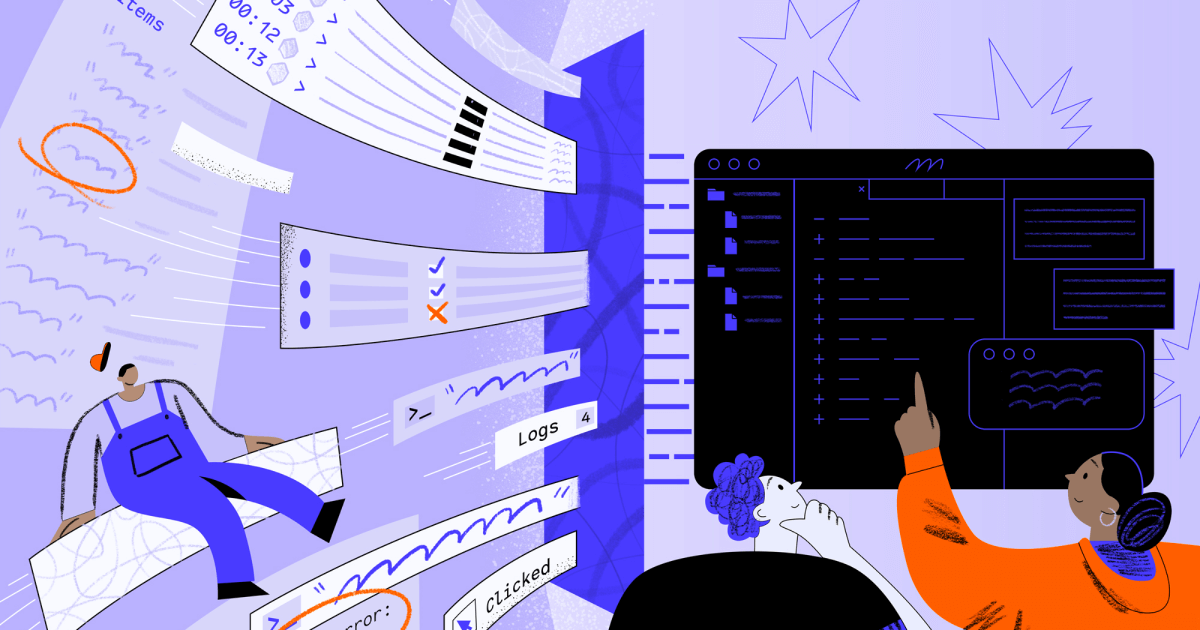System auto-documentation features available in beta
Engineering teams need a collaborative tool purpose-built for the complicated and multi-layered system architectures that underpin most companies’ operations.

After dozens of calls to validate our assumptions about what tools developers needed, we launched our first beta in February, 2024.
Since then, the number of conversations we’ve had about Multiplayer has grown into the hundreds.
We can confidently say that teams need a collaborative tool purpose-built for the complicated and multi-layered software systems that underpin most companies’ operations.
Today, we’re introducing our system auto-documentation feature in beta.
Making documentation painless
System documentation is vital for any software system, especially in large, complex distributed systems. Yet, it’s still one of the more painful and overlooked tasks that engineering teams face.
The reasons are obvious:
- It’s still a mostly manual process.
- Information is scattered across multiple sources of knowledge (e.g. Session Replays, APM tools, Jira, GitHub, Confluence, Slack, Notion, Google Doc’s, and even coworkers' memories).
- An up-to-date view of your system requires constant maintenance which wastes a ton of developer time.
When you have immediate visibility into your system, it accelerates work efficiency, eases stakeholder collaboration, and simplifies onboarding for new team members. Automating system documentation reduces human error, ensures consistency, and keeps information up-to-date, saving time and resources.
“When changes aren’t tracked, bad things happen - bad code, redundancy, technical debt, a lack of cohesion and the risk of losing everything when a key person walks out the door. We’ve removed the need to manually create and update system documentation so your actual running system can be your source of truth.”
- Thomas Johnson, Multiplayer CTO
Available today in beta: system auto-documentation
Today, Multiplayer is thrilled to introduce the system auto-documentation feature set in beta.
One of our early adopters, insurance technology provider FilingRamp, relies on Multiplayer to service some of the largest insurance carriers in the U.S.
"We build on Multiplayer because clients trust us to get their products to market faster and store their filings data securely. By auto-documenting our system with Multiplayer, our developers can focus on important feature development instead of documentation.”
- Jeremy Battles, CEO FilingRamp
This is the first step in transforming how teams visualize and document software systems. Previously, teams relied on general-purpose diagramming and whiteboarding tools that produced static and incomplete abstractions, leading to wasted time searching for information or, worse, making decisions based on outdated data.
Modern engineering teams require tools that embrace complexity and support dynamic system design, far surpassing the capabilities of traditional diagramming tools.
That’s why we built a tool that combines high-level abstractions with the ability to dive deep into the tech stack, offering up-to-date information on any component, structure, or relationship, and fostering collaborative problem-solving.
Leveraging OpenTelemetry
OpenTelemetry (OTel) is an observability framework and toolkit designed to create and manage telemetry data such as traces, metrics, and logs. It’s a vendor- and tool-agnostic, open source Cloud Native Computing Foundation (CNCF) project, born out of the need to standardize how to instrument code and send telemetry data to an observability backend.
By leveraging OpenTelemetry, Multiplayer captures distributed traces from your system, saving you from manually reconciling your system documentation with its real-world state.
Multiplayer's mission
In our discussions with engineering leaders, we identified three common pain points:
- Missing or incorrect system and API information
- Scattered information across multiple resources
- Accumulated architectural technical debt with no easy fix
The priority of engineering teams is to ship functional software on a schedule but they have to rely on clunky and inefficient legacy diagramming tools or dedicate significant time and resources to search for information across many knowledge repositories.
Multiplayer aims to make system understanding and debugging effortless for engineering teams.
It’s a beautifully designed tool that helps your team achieve these goals:
- Understand with your system in real-time. With a few clicks, access an up-to-date view of your entire system, including components, dependencies, and integrations. Eliminate drift within your manual documentation by using OpenTelemetry to understand in real-time system behavior, catch breaking changes early, and make informed decisions.
- Reduce maintenance overhead. Multiplayer automatically discovers, tracks, and detects all your components, dependencies, APIs and environments. You no longer have to invest time and resources in manually creating and updating static documentation.
- Effortlessly collaborate cross-team. Quickly align will all the relevant stakeholders (developers, support, QA, DevOps, PMs, etc.) on technical issues, bugs and features.
👀 If this is the first time you’ve heard about Multiplayer, you may want to see full stack session recordings in action. You can do that in our free sandbox: sandbox.multiplayer.app
If you’re ready to trial Multiplayer you can start a free plan at any time 👇





